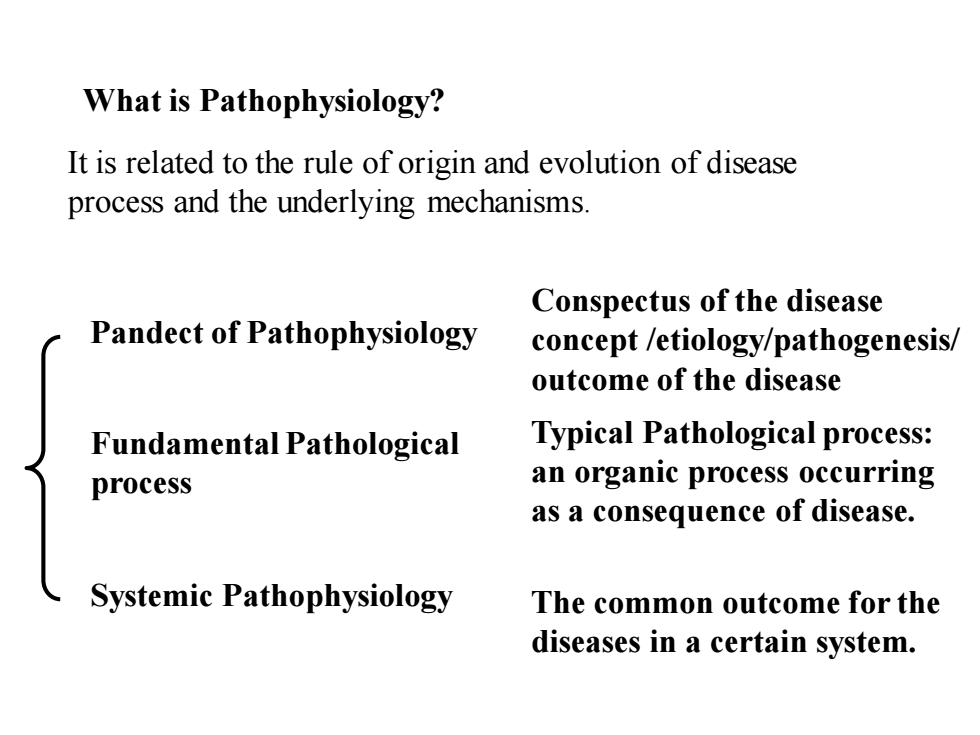
What is Pathophysiology?It is related to the rule of origin and evolution of diseaseprocess and the underlying mechanisms.Conspectus of the diseasePandect of Pathophysiologyconcept /etiology/pathogenesis/outcome of the diseaseTypical Pathological process:FundamentalPathologicalan organic process occurringprocessas a consequence of disease.Systemic PathophysiologyThe common outcome forthediseases in a certain system
It is related to the rule of origin and evolution of disease process and the underlying mechanisms. What is Pathophysiology? Pandect of Pathophysiology Fundamental Pathological process Systemic Pathophysiology Conspectus of the disease concept /etiology/pathogenesis/ outcome of the disease Typical Pathological process: an organic process occurring as a consequence of disease. The common outcome for the diseases in a certain system
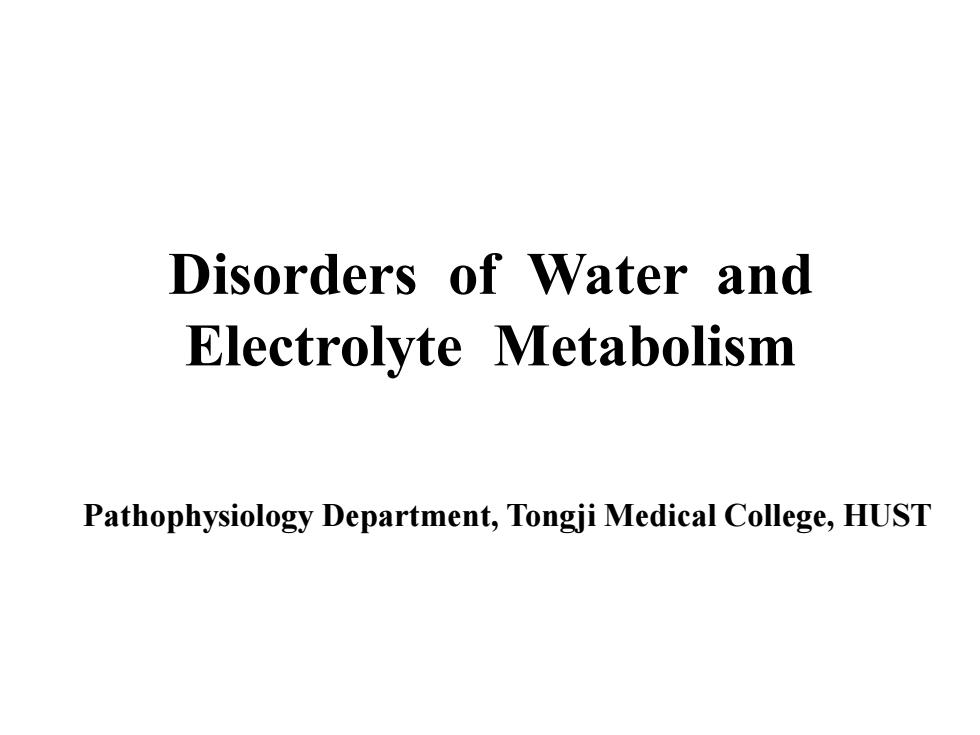
Disorders of Water andElectrolyte MetabolismPathophysiology Department, Tongji Medical College, HUST
Disorders of Water and Electrolyte Metabolism Pathophysiology Department, Tongji Medical College, HUST
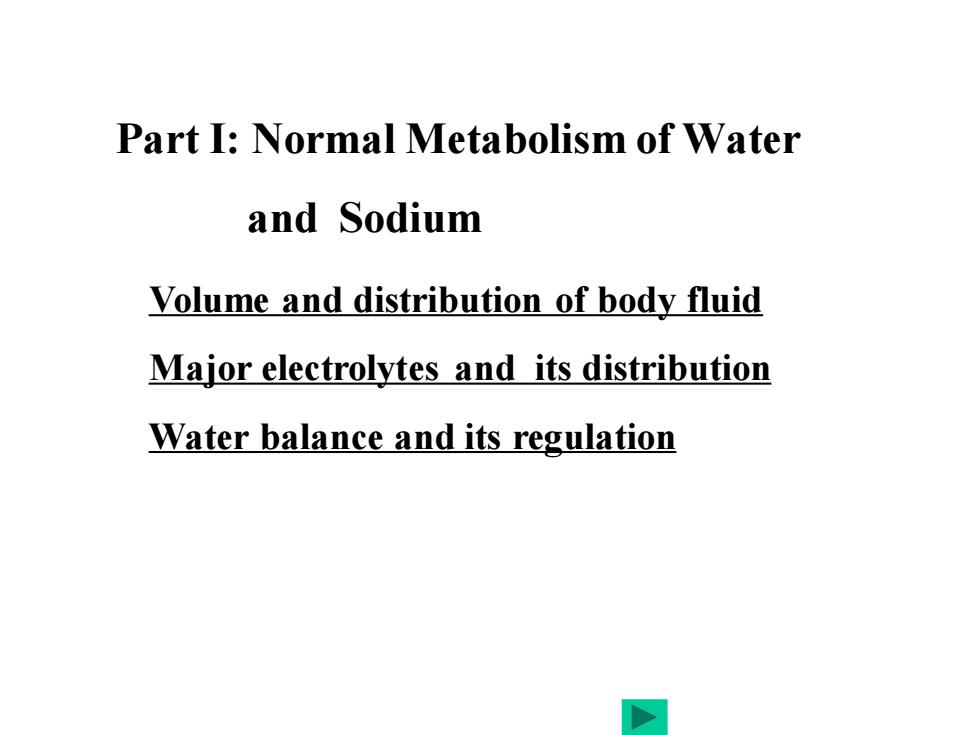
Part I: Normal Metabolism of Waterand SodiumVolume and distribution of body fluidMajor electrolytes and its distributionWater balance and its regulation
Part I: Normal Metabolism of Water and Sodium Volume and distribution of body fluid Major electrolytes and its distribution Water balance and its regulation
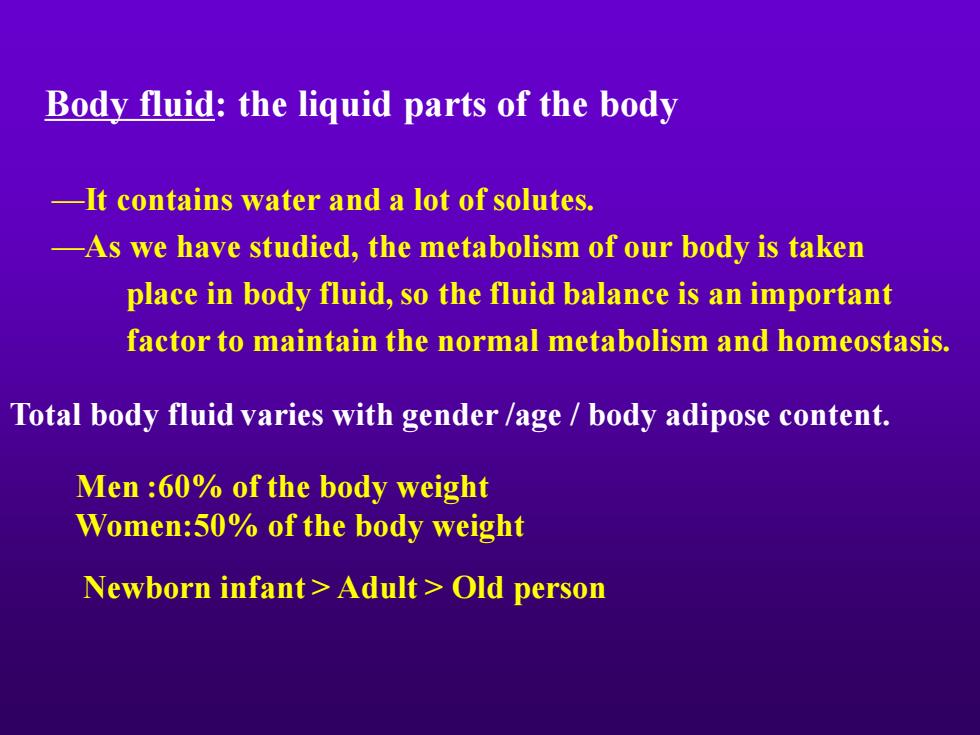
Body fluid: the liquid parts of the body-It contains waterand a lot of solutes.-As we have studied, the metabolism of our body is takenplace in body fluid, so the fluid balance is an importantfactorto maintainthenormal metabolism and homeostasisTotal body fluid varies with gender /age / body adipose content.Men:60%ofthebodyweightWomen:50% ofthebodyweightNewborninfant>Adult>Oldperson
Body fluid: the liquid parts of the body —It contains water and a lot of solutes. —As we have studied, the metabolism of our body is taken place in body fluid, so the fluid balance is an important factor to maintain the normal metabolism and homeostasis. Total body fluid varies with gender /age / body adipose content. Men :60% of the body weight Women:50% of the body weight Newborn infant > Adult > Old person
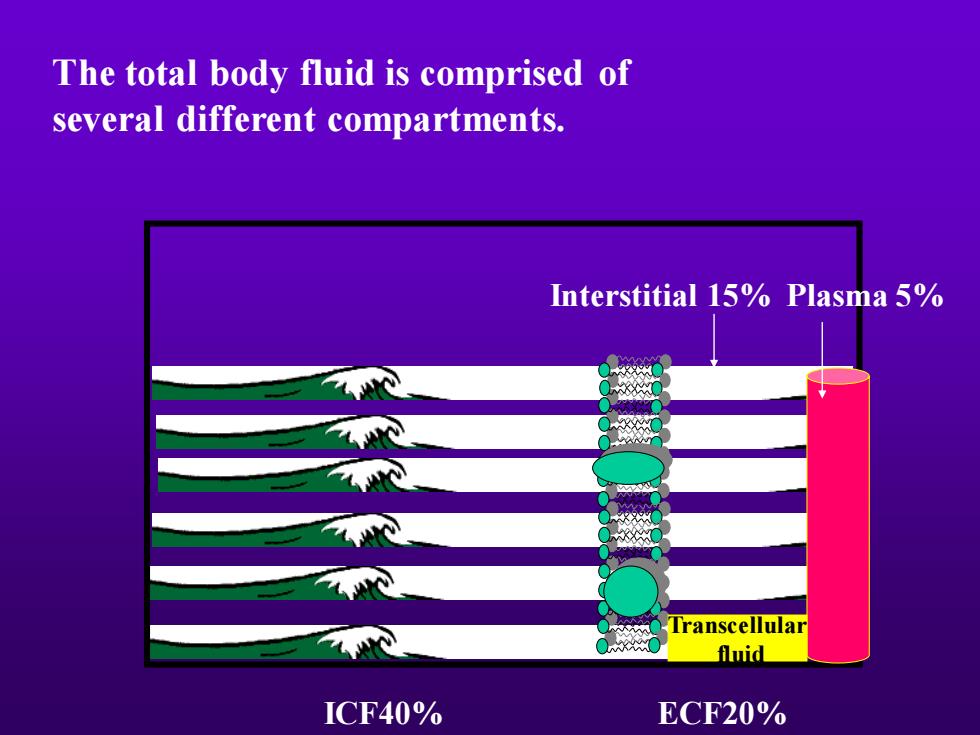
The total body fluid is comprised ofseveral different compartmentsInterstitial 15% Plasma 5%TranscellularfluidICF40%ECF20%
ICF40% ECF20% The total body fluid is comprised of several different compartments. Interstitial 15% Plasma 5% Transcellular fluid